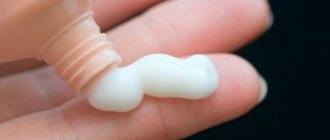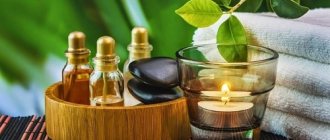The main role in the development of gastric and duodenal ulcers is played by the bacterium Helicobacter pylori. With increased reproduction, the activity of these microorganisms leads to a weakening of the protection of the mucous membranes of the named gastrointestinal organs and their erosive damage. Manifestations of the disease seriously reduce the quality of life: patients regularly experience attacks of severe pain, heartburn, and nausea. Against this background, psycho-emotional problems also develop: ulcer sufferers, as a rule, show increased irritability, often suffer from sleep disturbances, sudden mood swings, increased fatigue, and depression. The presence of a peptic ulcer requires a very noticeable lifestyle correction (introduction of dietary nutrition, reduction of habitual exercise, etc.). Neglecting such restrictions is dangerous: violations of the regime greatly increase the risk of developing severe complications.
Most ulcer sufferers are forced to constantly take medications, but there are many effective folk recipes that help alleviate the painful condition or even be completely cured. We offer the most reliable of these tools to the attention of our readers.
Oatmeal jelly
Oats contain a lot of starchy substances, which, when cooked, turn into a decoction, which is why its consistency becomes viscous and sticky. Drinking jelly envelops the walls of the stomach, creating a protective film that relieves irritation and reduces the acidity of gastric juice. As a result, jelly quickly relieves heartburn, eliminates belching and nausea.
To prepare homemade jelly, add a glass of washed oats to a liter of water, bring to a boil and cook over low heat for half an hour. Then the boiled broth is brought to the same volume with boiling water, boiled for a few more minutes, cooled and filtered. Kissel should be drunk three times a day, half a glass half an hour before meals. The drug is extremely effective: within a day after the start of treatment, attacks of pain due to exacerbation of peptic ulcer disease cease.
Source: depositphotos.com
Potato juice, sea buckthorn and propolis
These drugs are used in the well-known course of therapy for peptic ulcer disease. Treatment consists of three stages:
- Take 100 ml of raw potato juice twice a day. To prepare one serving, two or three well-washed medium-sized tubers are grated on a fine grater along with the peel (“the eyes” must be cut out, as they contain a lot of solanine). The resulting pulp is squeezed through gauze. The juice should be drunk immediately after preparation; it cannot be stored. The greatest amount of substances beneficial to the stomach can be extracted from potato varieties whose tubers are red. Their juice, rich in biologically active components, has an anti-inflammatory and enveloping effect, optimizes the acidity of the stomach contents. Treatment lasts a week.
- Therapy with propolis tincture. A heaping teaspoon of “bee glue” crushed into powder is infused for a week in 100 ml of medical alcohol and then filtered. Take the drug three times a day, an hour after meals, diluting 25 drops of tincture in a glass of water. Propolis successfully relieves inflammation and promotes rapid healing of ulcerated areas of the mucous membrane. The stage lasts three weeks.
- Take a teaspoon of sea buckthorn oil three times a day for a month. You can make your own medicinal remedy from sea buckthorn seeds or use a pharmaceutical preparation. Sea buckthorn oil has a powerful healing effect. Its effect completes the process of scarring of ulcerated areas of the stomach wall.
This course of treatment can significantly improve the condition of ulcer patients. In the most difficult cases, it is recommended to do it twice a year.
Source: depositphotos.com
Diagnostics
In diagnosing ulcerative colitis, it is important to distinguish it from other inflammatory diseases with similar symptoms. The diagnostic complex includes a number of mandatory activities, including various laboratory and instrumental studies.
Which doctor should I contact?
The first stage of the examination is a conversation with a gastroenterologist. Taking an anamnesis includes determining the hereditary predisposition to the disease, determining the nature of the complaints, the color of the blood contained in the stool, its quantity, localization of pain, etc.
During the examination, the condition of the mucous membrane of the eyes is determined and the abdomen is palpated. This procedure can identify areas of increased sensitivity and possible enlargement of the colon.
Laboratory research
Laboratory tests include:
- General blood analysis. Particular attention is paid to the level of hemoglobin, the number of leukocytes and red blood cells.
- A biochemical blood test that allows you to identify the inflammatory process (reactive protein), the level of gamma globulins to assess the amount of antibodies.
- An immunoassay to determine the immune response to antibodies.
- Analysis of stool for bacteria, mucus and blood.
To determine the nature of the inflammatory process and its localization, the following is prescribed:
- Endoscopy of the large intestine. The procedure requires physiological and psychological preparation of the patient, as it is accompanied by discomfort and unpleasant sensations. Endoscopy can detect swelling and redness of the mucosa, its structure and bleeding, the presence of blood or pus in the large intestine. The sigmoid colon is examined using rectosigmoidoscopy.
- Colonoscopy is an examination of the large intestine to assess the extent of the pathological process and exclude other diseases, in particular malignant tumors.
- X-ray - to identify possible complications, for example, perforation of the intestinal wall, as well as to assess the condition of the mucosa, the presence of erosions and pseudopolyps.
- Irrigography is a study using contrast to clarify the diagnosis.
Based on the results of a comprehensive study, the doctor prescribes an individual treatment regimen. In severe cases, the patient can only be helped by emergency surgery.
Clay
White or blue clay, sold in pharmacies as a treatment for joints or for cosmetic use, is also successfully used for exacerbations of peptic ulcers. Clay particles help heal the surface of the mucous membrane and remove toxic substances from the stomach.
The healing drug is a solution that is taken 200 ml twice a day an hour before meals. At the beginning of treatment, it is prepared from a third of a teaspoon of clay and a glass of water. The amount of clay is gradually increased, bringing it to a full teaspoon. The course lasts 30 days and can be repeated after a 10-day break.
Source: depositphotos.com
When can you practice traditional treatment?
Painful spasms during an ulcer are not concentrated specifically on the internal organs. Heartburn, colic, bloating, pain in the lower abdomen and constipation appear. If alkalization is poor, food debris remains at the bottom and causes fermentation. If symptoms of duodenal disease appear periodically, then you can not use medications, but limit yourself to alternative medicine methods.
Abdominal pain due to ulcers can be relieved using traditional methods
The use of traditional methods for duodenal ulcers is effective:
- at the initial stage of the disease;
- for preventive purposes if a person is in a risk class;
- to reduce hydrochloric acid;
- to normalize peristalsis;
- to prevent relapses during seasonal periods.
The use of traditional treatment is aimed at reducing the acidity level of digestive juice. At the same time, the aggressiveness of the acid decreases, and it does not cause irritation to the organ mucosa.
Honey with walnuts
Not only healing, but also tasty. It is prepared from flower honey, finely ground walnut kernels and butter, taken in equal parts (300 g each). The components are placed in an enamel bowl and heated for 20 minutes in the oven at a temperature of about 100 °C. The well-mixed mass is taken one tablespoon three times a day half an hour before meals.
If the peptic ulcer is not in an advanced state, the medicine helps to get rid of the disease in the shortest possible time.
Source: depositphotos.com
Causes of duodenitis
Various reasons may be involved in the formation of duodenitis. The main ones include:
- diet errors (love of spicy, smoked, fatty foods);
- bad habits, frequent consumption of coffee;
- food and drug poisoning;
- invasions (parasitic diseases);
- concomitant pathologies of the gastrointestinal tract (gastritis, gastric ulcer, inflammation of the gallbladder, etc.);
- Helicobacter pylori infection;
- diseases and conditions that cause disruption of the blood supply to intestinal tissues.
If any of these symptoms occur, it is important to contact a gastroenterologist to get diagnosed and receive timely help.
Aloe
The bactericidal, anti-inflammatory and analgesic properties of this indoor plant are widely known. It is also used in the treatment of peptic ulcers, since aloe helps normalize the acidity of gastric juice and accelerate the regeneration of mucosal cells.
To prepare the medicine, use a plant no younger than three years old. It is not watered for two weeks before processing. The leaves are cut, washed, wrapped in cotton cloth and kept in the refrigerator for several days. Then 500 g of plant material is passed through a meat grinder, mixed with the same amount of natural honey, heated in a water bath until a temperature of 60 ° C is reached and 500 ml of good red wine is poured. The medicine is infused for a week in a glass container in a dark place. The course of treatment is designed for three weeks (three times a day an hour before meals), and in the first week there is a teaspoon per dose, in the second - a tablespoon, and in the third - two tablespoons of the mixture.
Source: depositphotos.com
Plantain
The effectiveness of plantain in the treatment of gastric diseases has been known since ancient times. There are several industrially produced pharmaceutical preparations made from this plant.
At home, peptic ulcers are treated with tea from dry plantain leaves: a teaspoon of the raw material is poured into a glass of boiling water and the resulting infusion is taken half an hour before meals three times a day. Fresh juice, which can be squeezed from freshly picked plantain leaves, is also very useful. It is also drunk half an hour before meals three times a day, gradually increasing the dose from half a teaspoon to a tablespoon per dose.
Source: depositphotos.com
Complications of the disease
Since the disease is not always pronounced, many people let the disease take its course. When taking painkillers, do not rush to see a doctor. But relief of symptoms will never replace proper treatment, and its absence can lead to the following adverse consequences:
- duodenal ulcer with perforation (a through hole in the intestinal wall);
- intestinal bleeding;
- acute pancreatitis (inflammation of the pancreas);
- jaundice (if the secretion of bile from the ducts into the duodenum is impaired, bilirubin in the blood increases);
- duodenal dystrophy.
Chaga
Substances contained in the body of the tinder fungus (dry birch fungus, or chaga) can have a healing, regenerating, hemostatic and anti-inflammatory effect. To treat peptic ulcers, a water infusion of chaga is used.
It is prepared like this: the tinder fungus is soaked in water for five hours and passed through a meat grinder. Then a glass of the resulting mass is poured with a liter of heated (not hot) water and left for two days in a warm place. The strained solution is taken one third of a glass three times a day half an hour before meals. The duration of treatment is one month.






